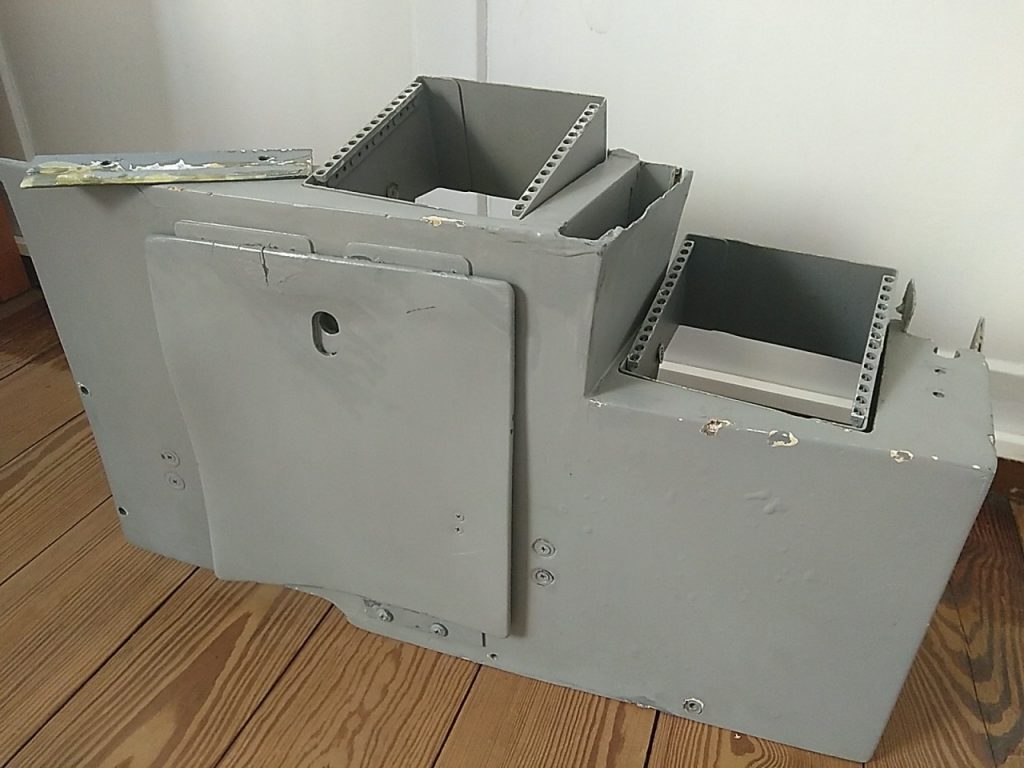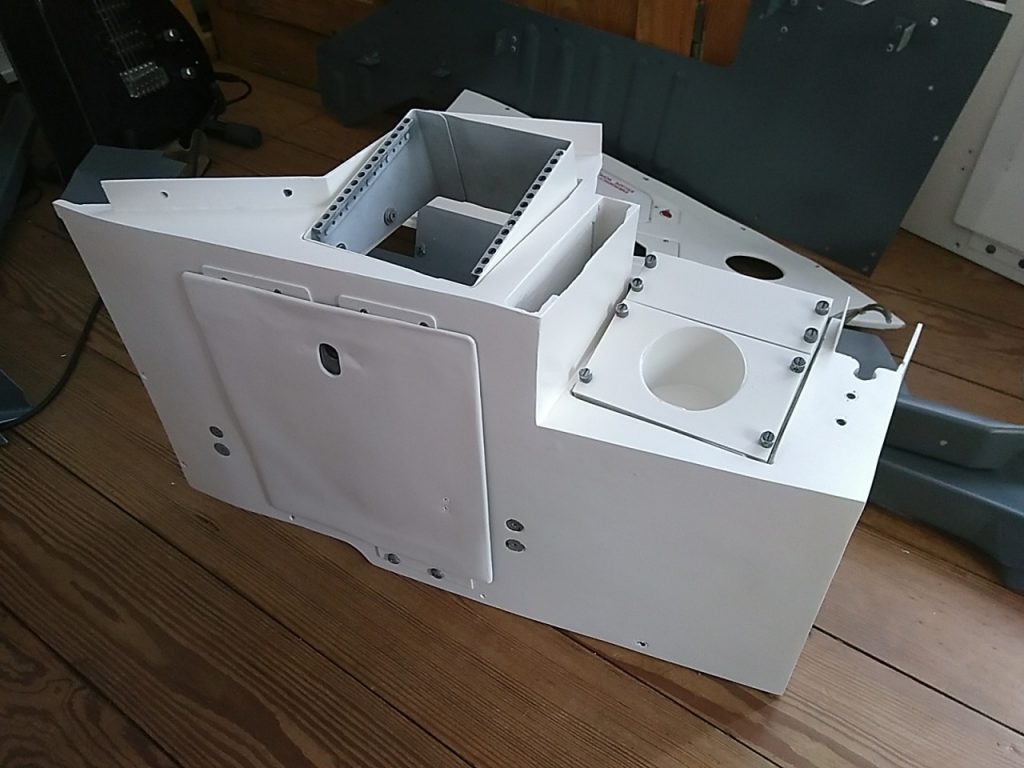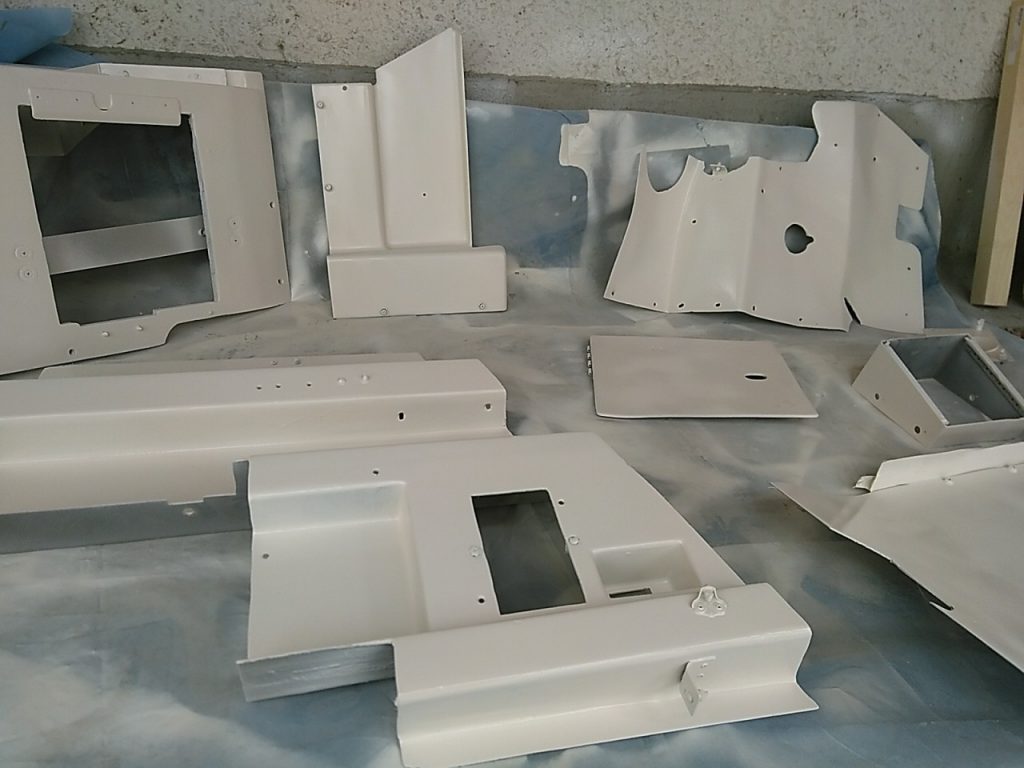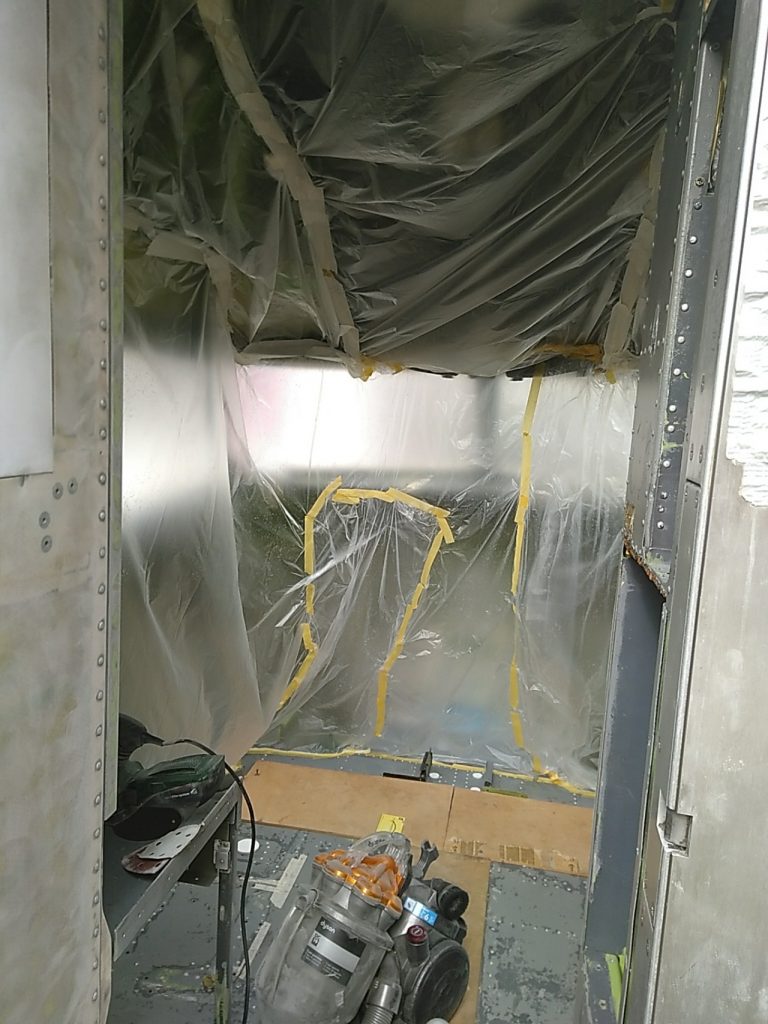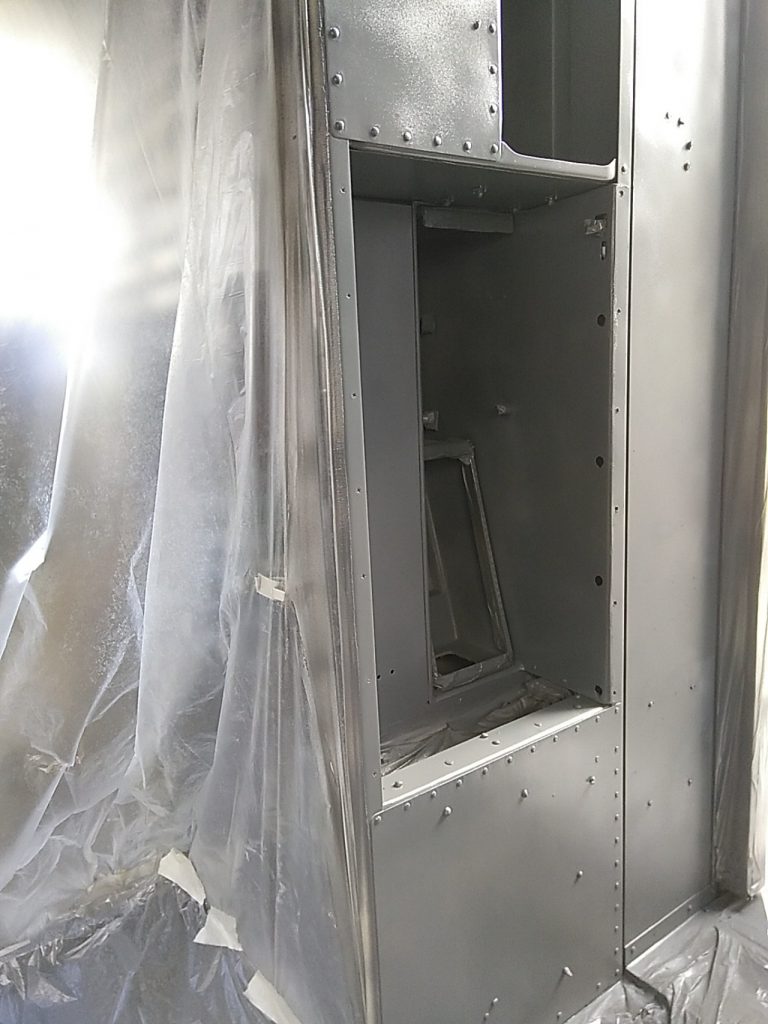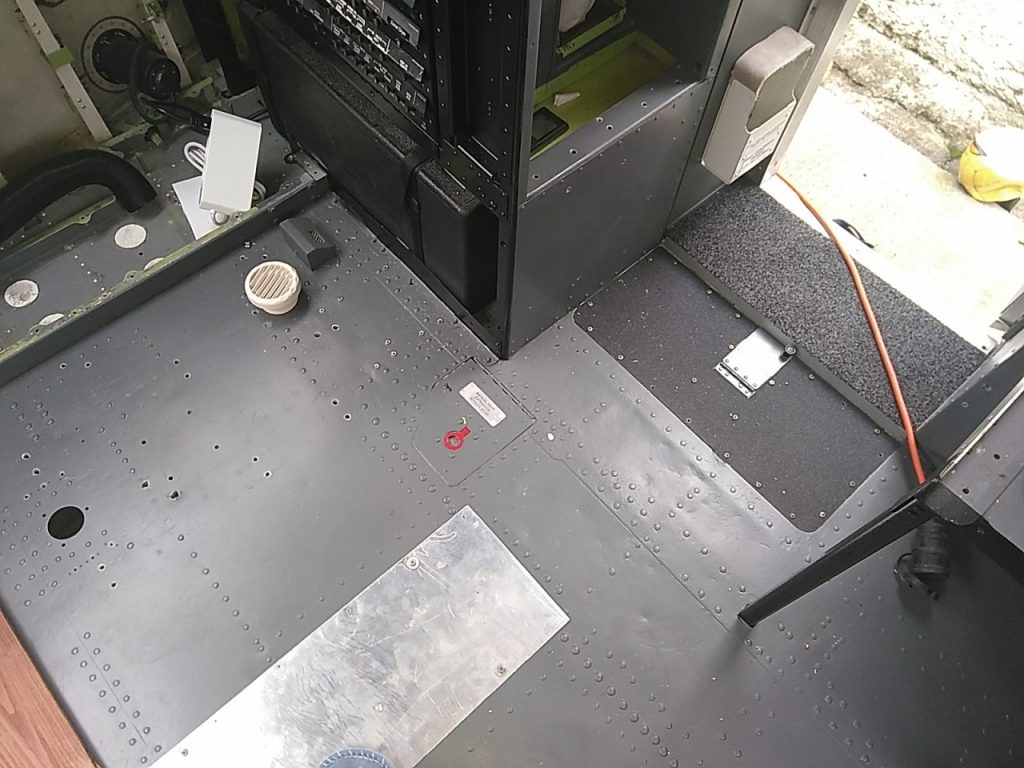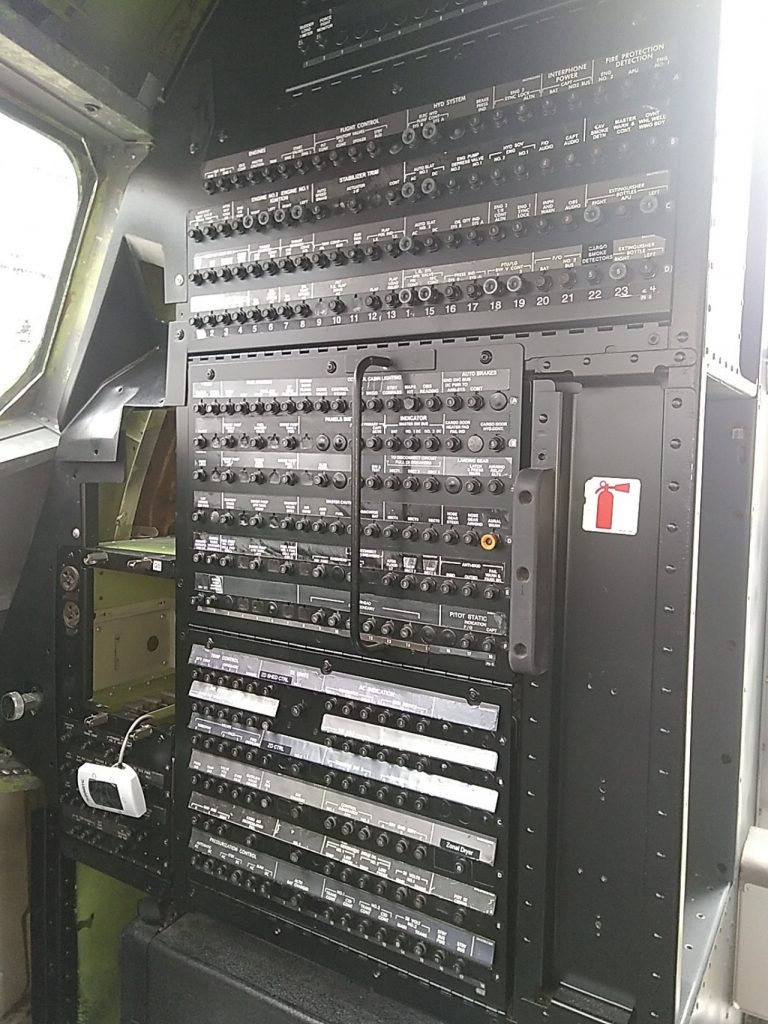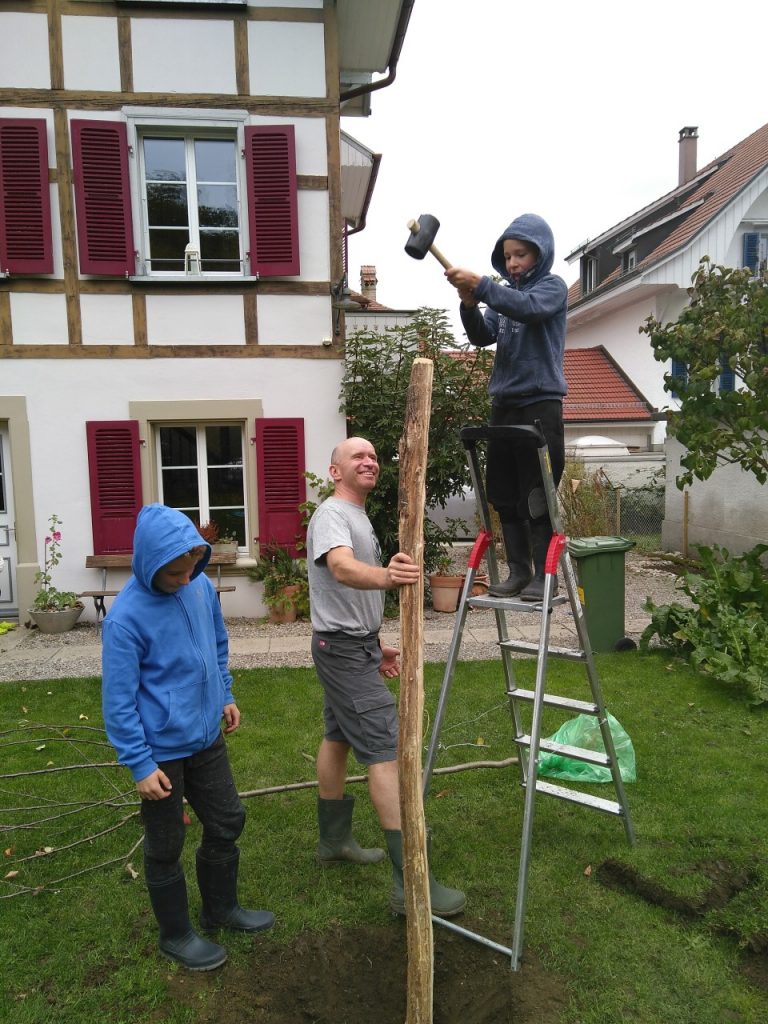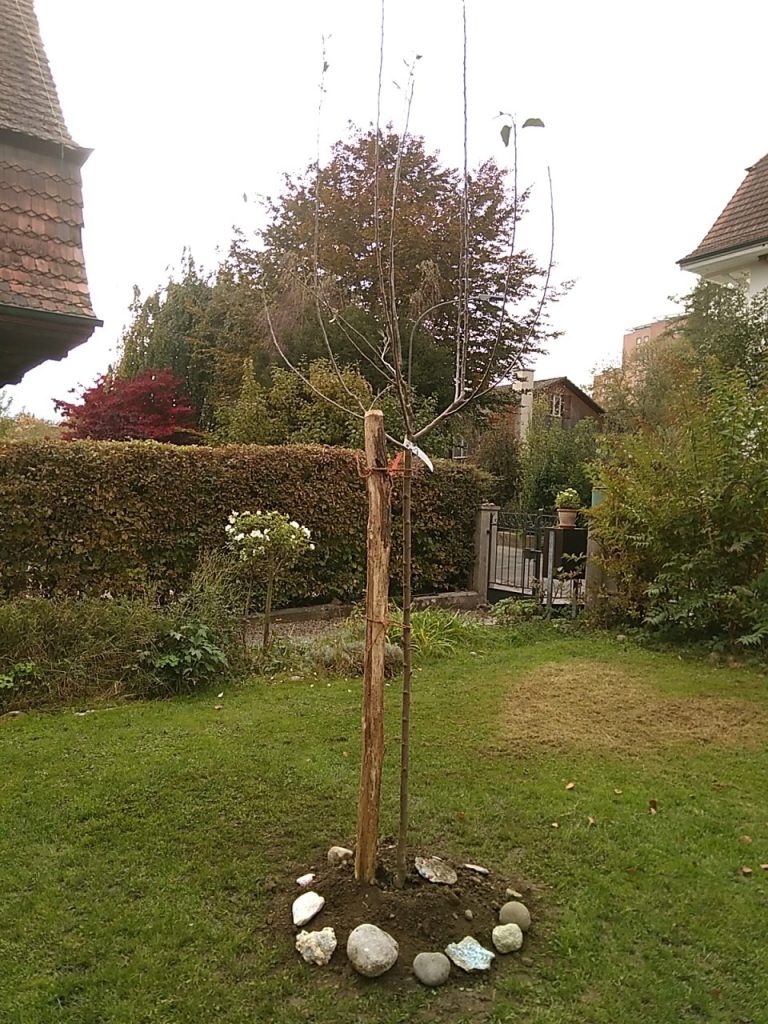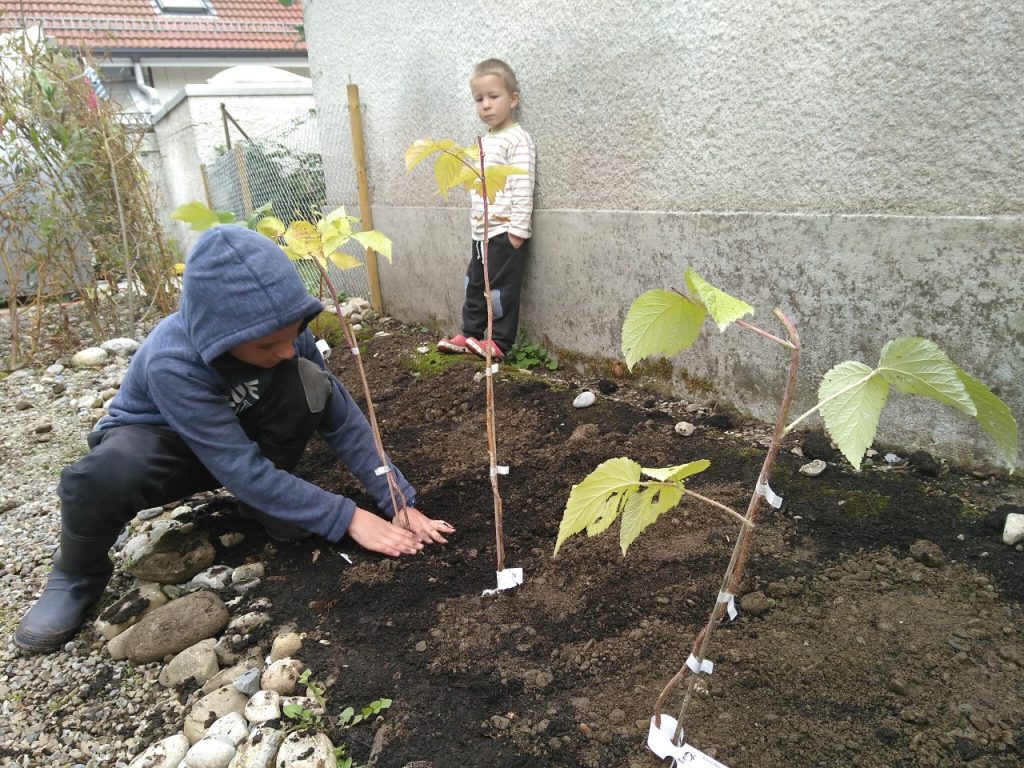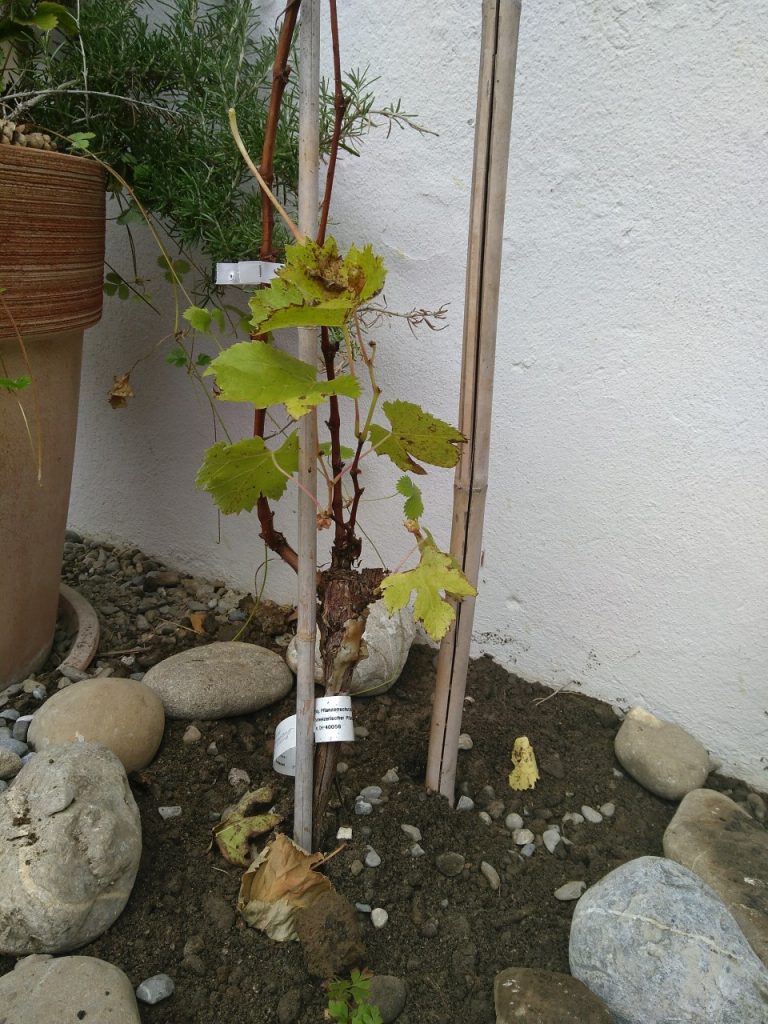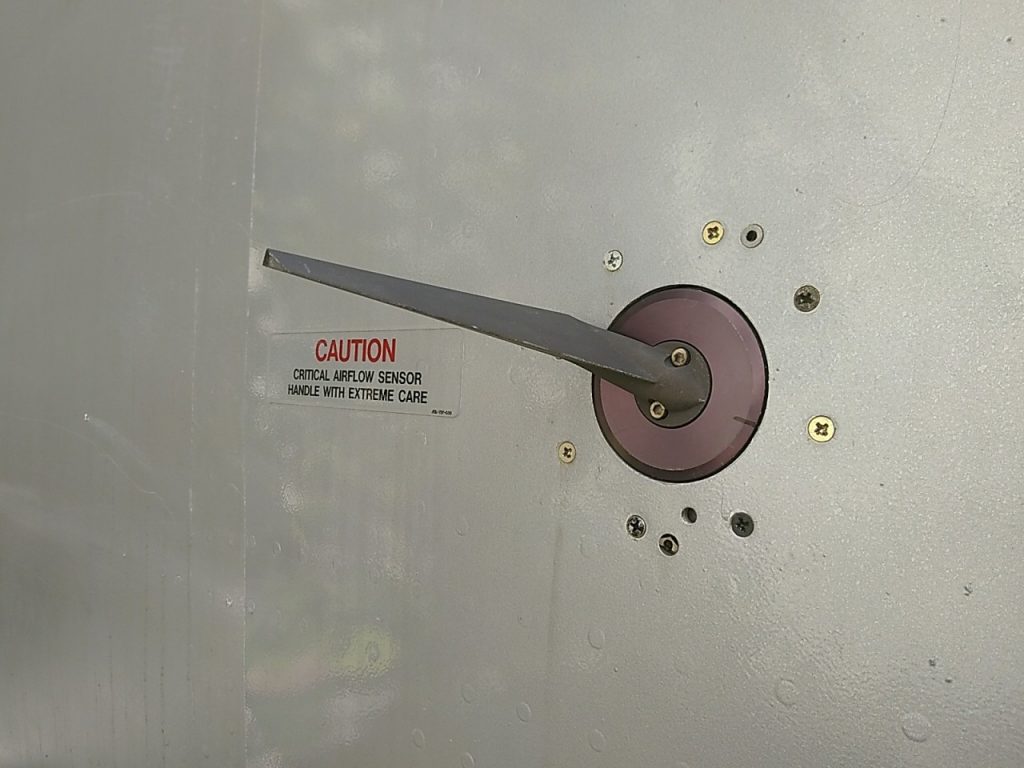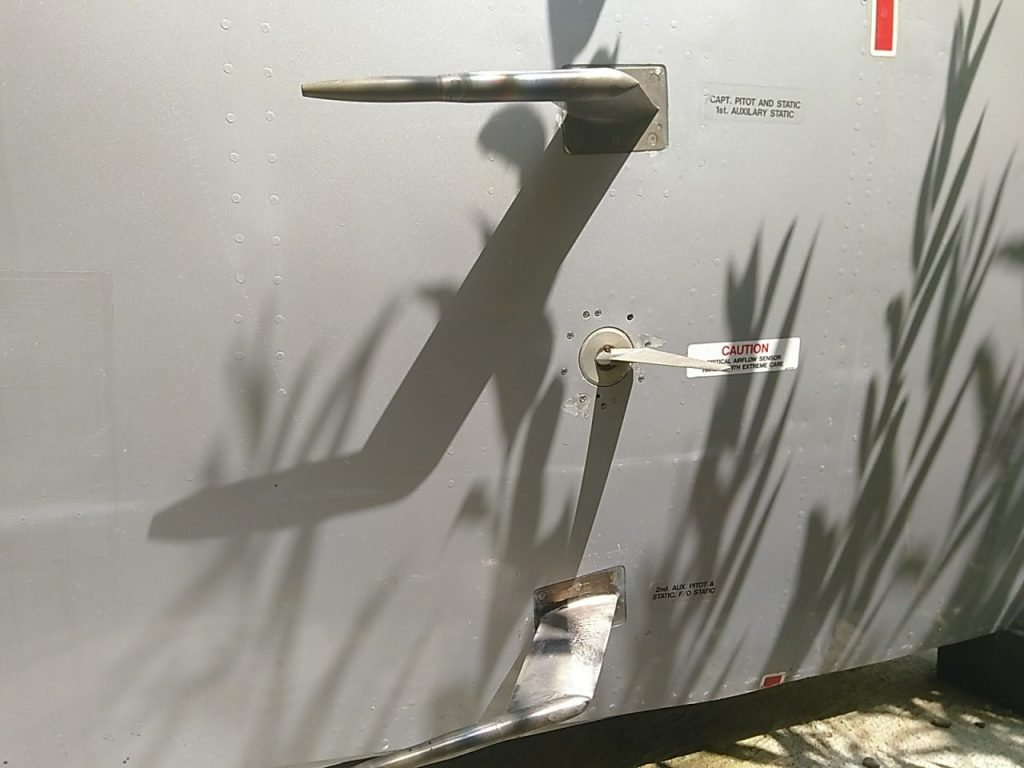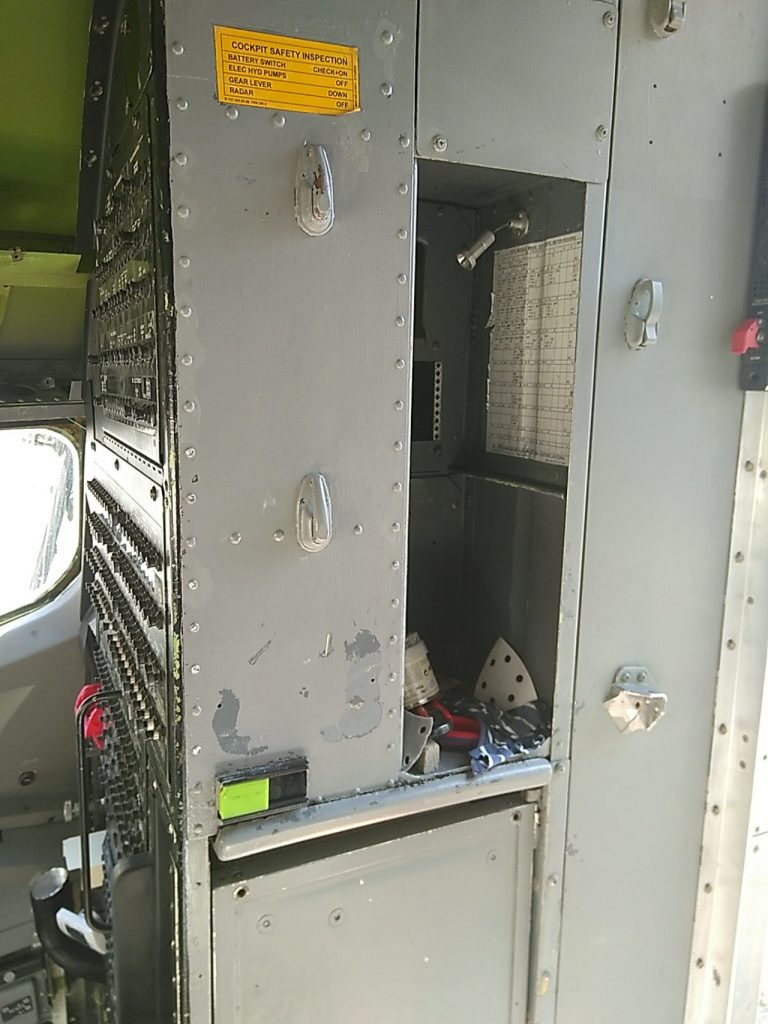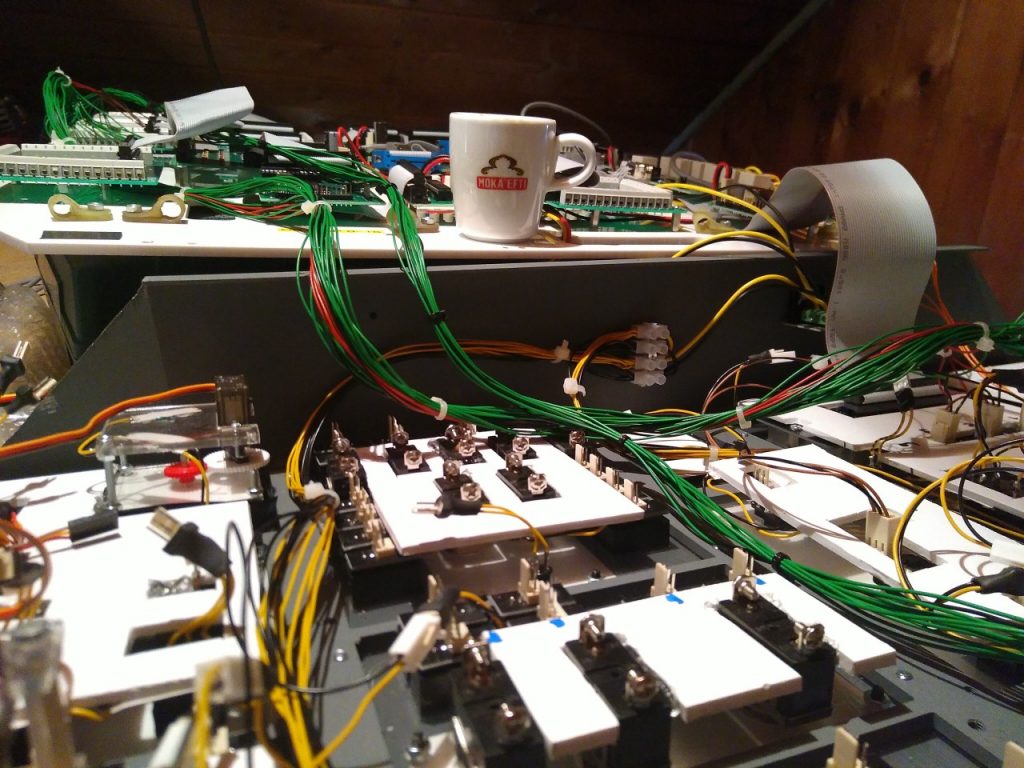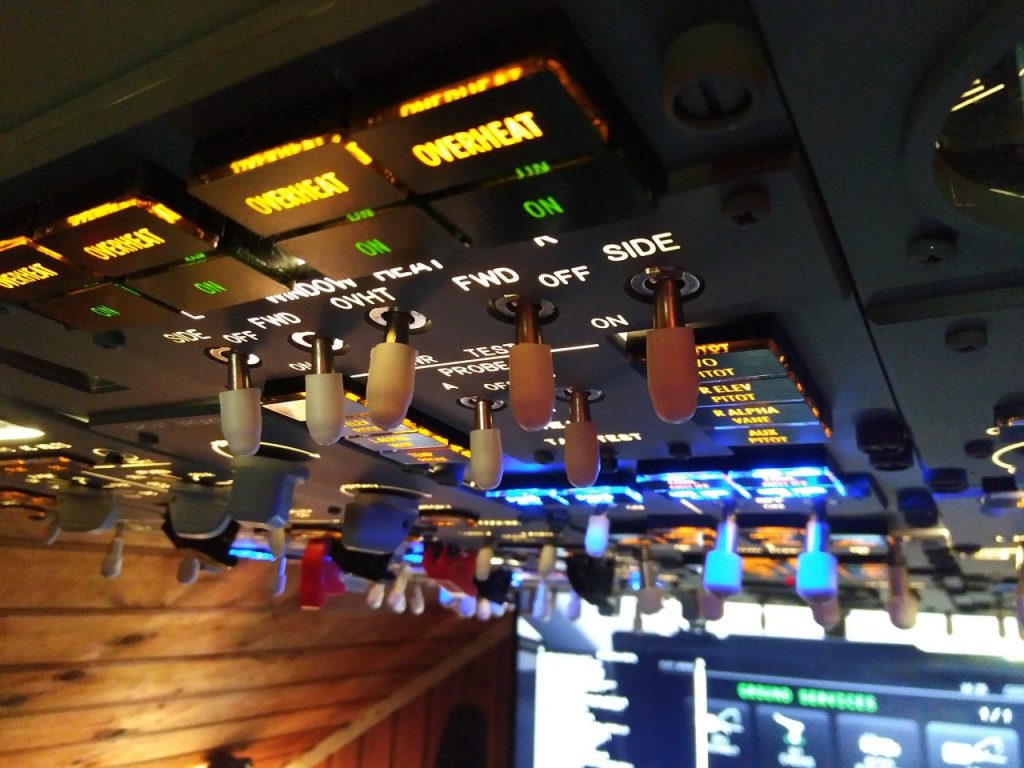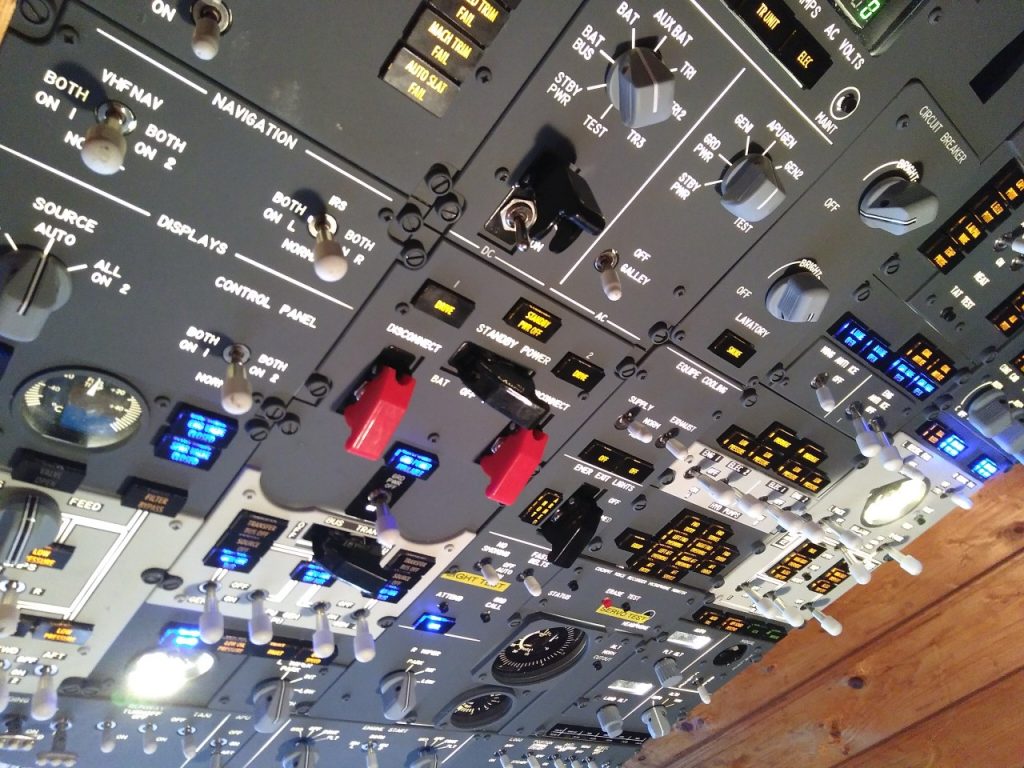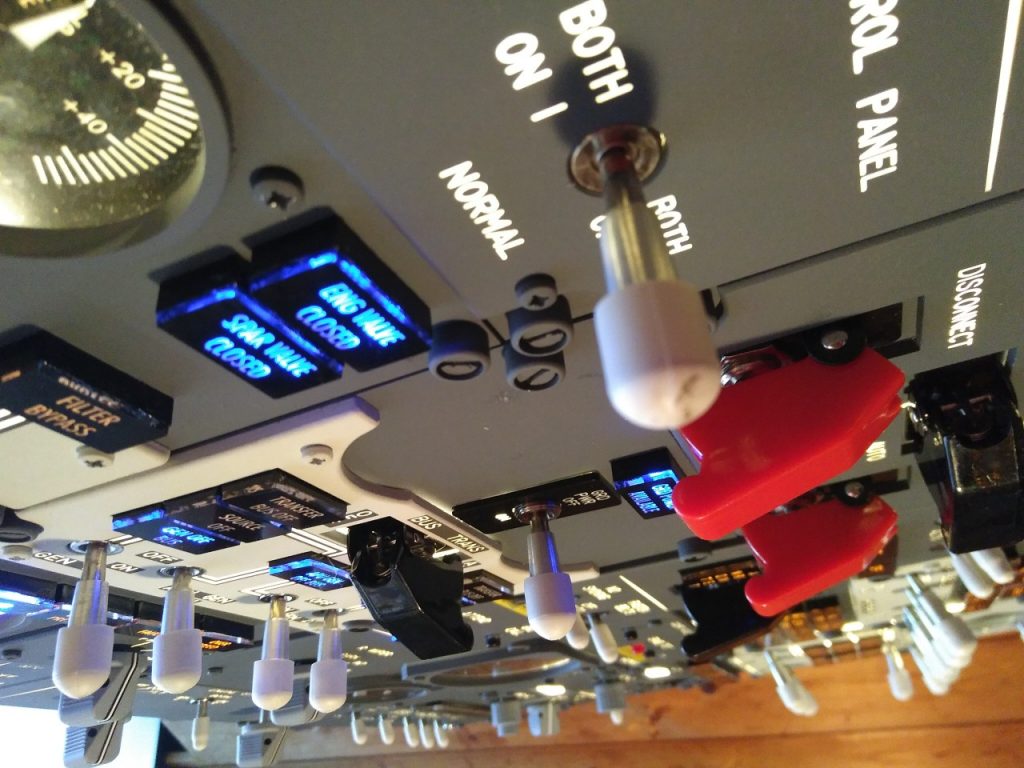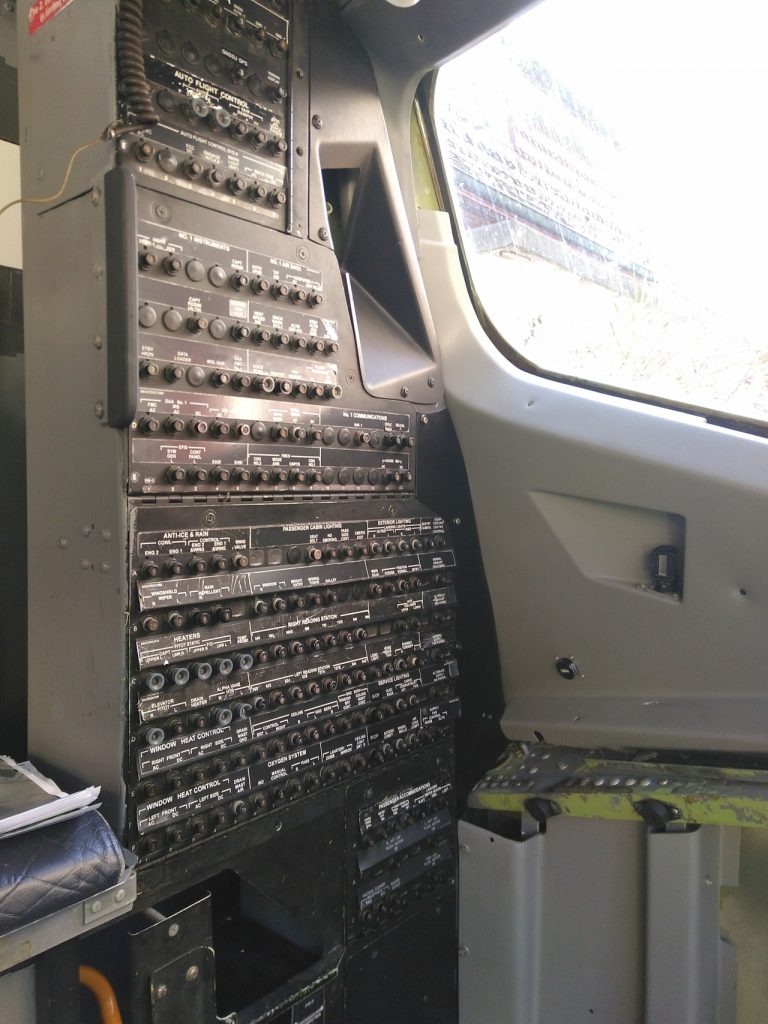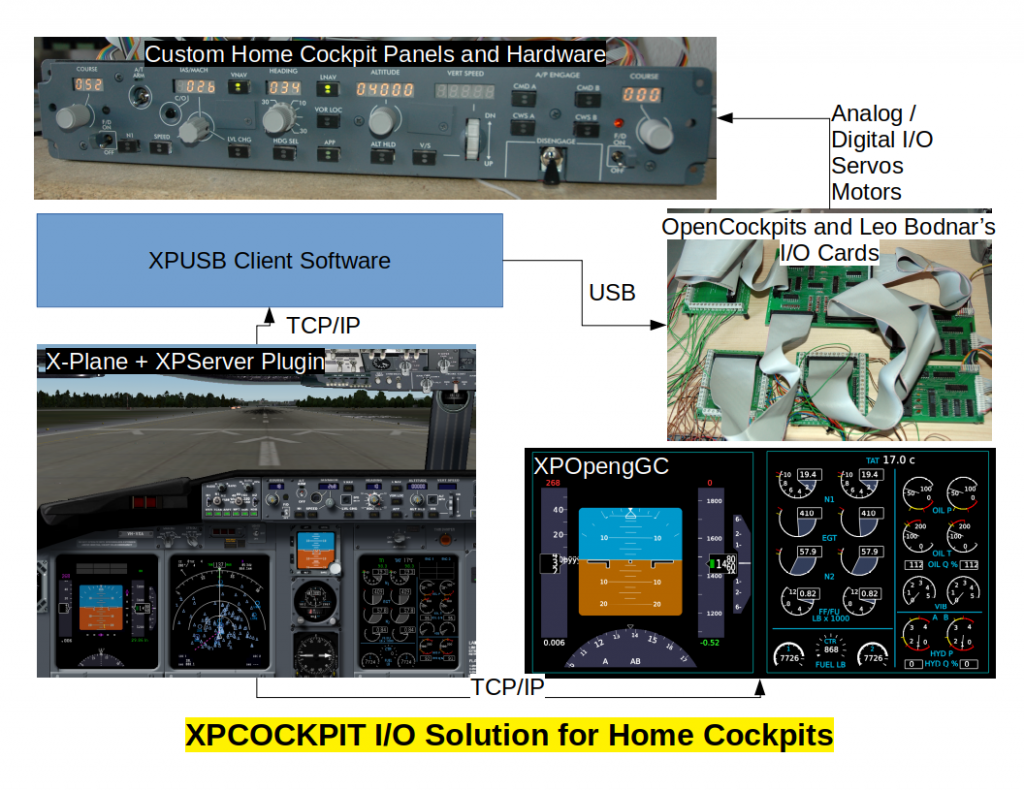The COVID-19 lockdown during spring with good weather was the start of a major refurbishing action of all cockpit interior parts. This included removing 2-3 layers of paint by sanding, filling and remodeling broken parts, sanding again, filling scratches, sanding again, painting with primer and with the RAL 7011 (gray) and 9001 (beige) Boeing colors and finishing with matte paint. The interior was finished a few days ago in November 2020 and thus took some time. The thing could now be sold again as a brand new B737-300 cockpit …
Reworking interior parts. Left: before after 30 years of use; middle: after paint removed and while remodeling broken parts; right: finished with RAL 9001 color.
Sanding, scraping off paint in the interior of the Cockpit … and …
… finally finished with almost “living room quality”. Includes an entry carpet and an anti-slip grip cover which would otherwise find its use on a skateboard.
Next in line is piping work for the air conditioning outlets in front of, above and behind the pilots. Then we’ll proceed to thermal insulation (likely with natural sheep wool) and start planning the electrical wiring of cockpit lighting and placement of computers, power supplies and audio equipment. Maybe the design of the minibar will have priority.

